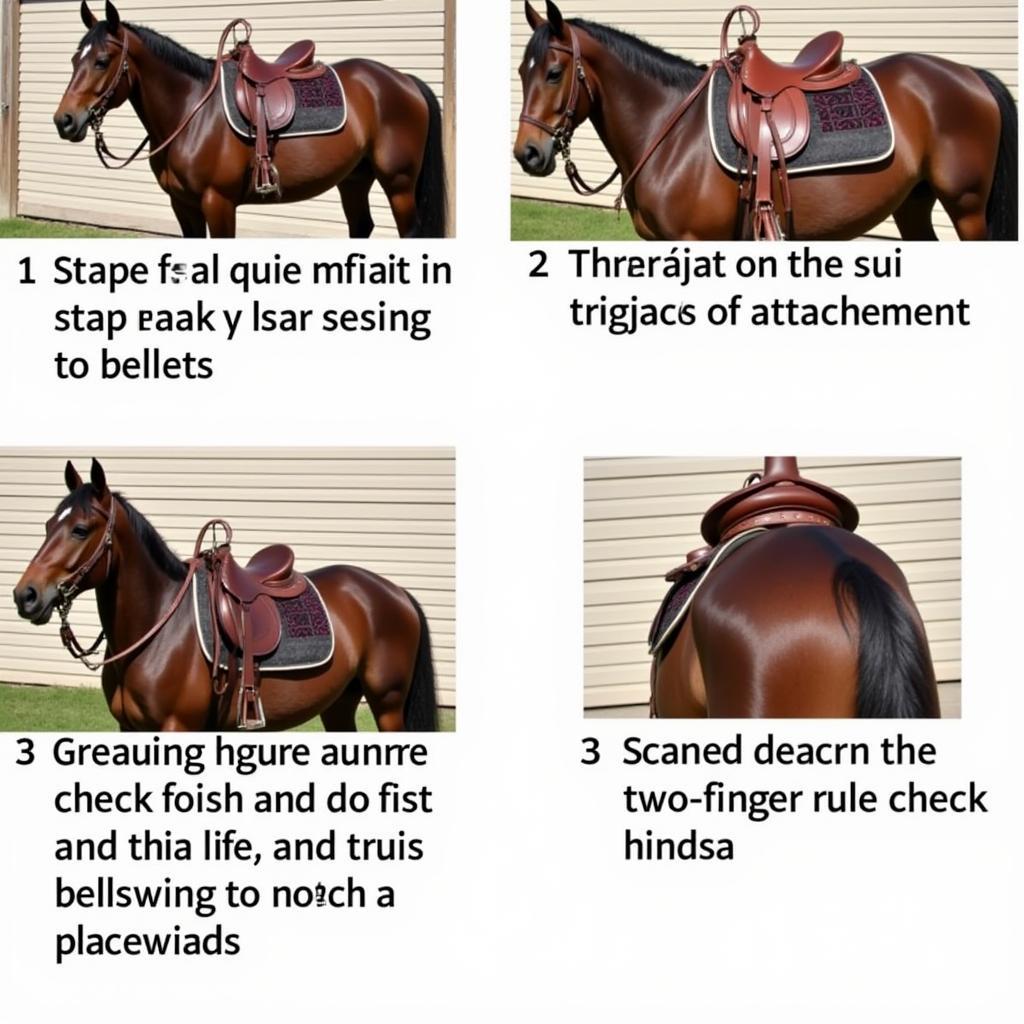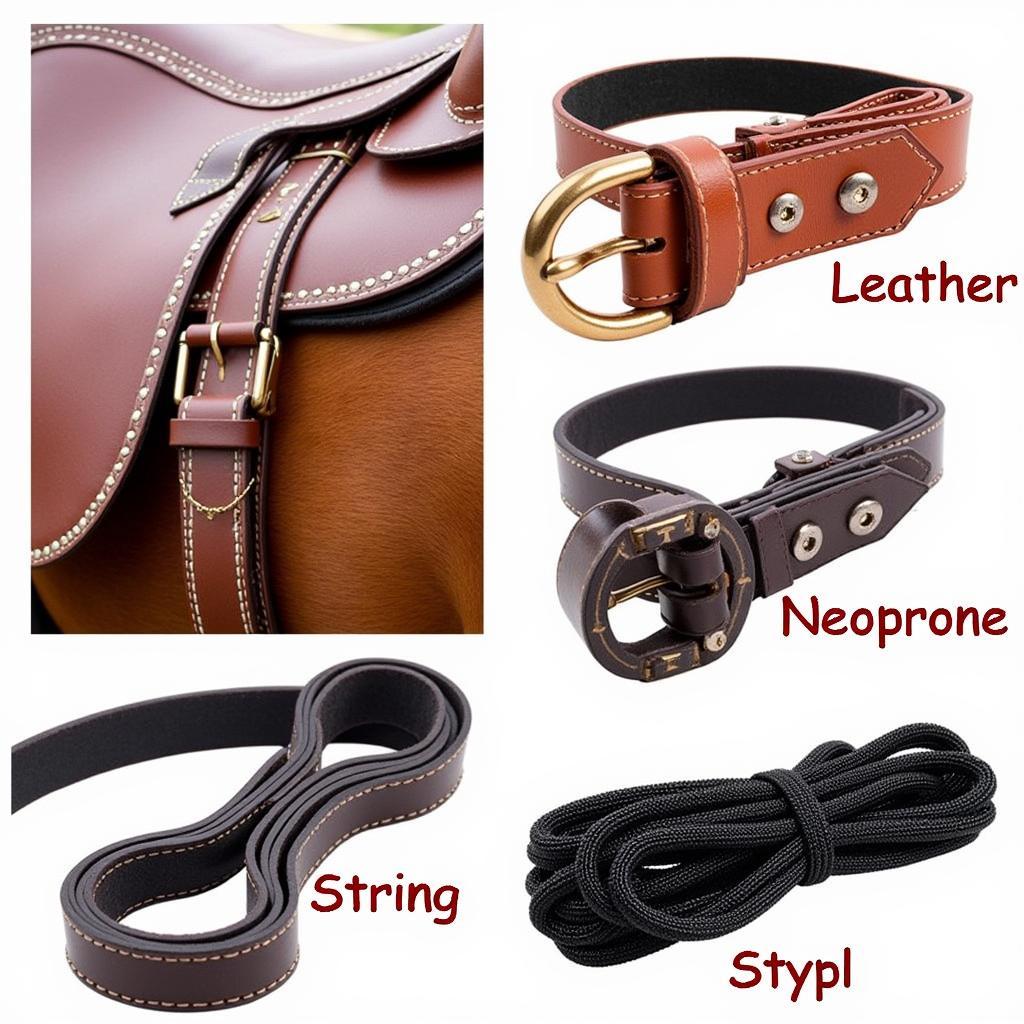A Horse Saddle Girth is a crucial piece of equipment that keeps the saddle securely in place, ensuring both the horse’s and rider’s safety and comfort. Choosing the right girth can significantly impact your horse’s performance and well-being. This comprehensive guide will explore everything you need to know about horse saddle girths, from different types and materials to proper fitting and maintenance.
Choosing the correct horse saddle girth is paramount for a comfortable and safe ride. There are various types of girths available, each designed with specific features and benefits. Understanding these differences will help you make an informed decision for your horse’s individual needs.
Types of Horse Saddle Girths
Several factors influence the choice of a horse saddle girth, including the horse’s conformation, discipline, and any sensitivities. Let’s delve into the most common types:
- Leather Girths: These are traditional and popular, known for their durability and classic appearance. Leather girths can be further categorized into plain leather, padded leather, and shaped leather, each offering varying levels of comfort and pressure distribution.
- Neoprene Girths: Neoprene, a synthetic rubber material, offers excellent shock absorption and is easy to clean. These girths are often preferred for horses with sensitive skin due to their non-irritating properties.
- String Girths: Made from woven string or cord, these girths are lightweight and breathable, making them suitable for hot climates or horses prone to overheating.
- Atherstone Girths: These girths are recognizable by their elasticated sections at both ends, providing flexibility and a more comfortable fit, especially for horses with a wide rib cage.
- Dressage Girths: Specifically designed for dressage saddles, these girths are typically shorter and contoured to allow for greater freedom of movement in the horse’s shoulders.
After the opening paragraph, it’s important to consider the proper fitting of your horse riding tack.
How to Properly Fit a Horse Saddle Girth
A properly fitted girth is essential to prevent discomfort and potential injury. Too tight, it can restrict breathing and cause sores; too loose, and the saddle can slip, creating a dangerous situation. Here’s a step-by-step guide:
- Saddle Placement: Ensure your saddle is correctly positioned on your horse’s back, not too far forward or back.
- Girth Attachment: Attach the girth to the billets on the saddle, starting with the front billets and then moving to the back.
- Gradual Tightening: Tighten the girth gradually, a few holes at a time, allowing your horse to relax and exhale between adjustments.
- The Two-Finger Rule: You should be able to fit two fingers comfortably between the girth and your horse’s side.
- Check After Mounting: After mounting, check the girth again and tighten if necessary. Movement can sometimes cause slight loosening.
 How to Correctly Fit a Horse Saddle Girth
How to Correctly Fit a Horse Saddle Girth
What are the different materials used for horse saddle girths? Why are there so many varieties of race horse tack?
Horse Saddle Girth Materials: A Closer Look
The material of the girth plays a significant role in comfort, durability, and maintenance. Here are some common materials:
- Leather: A classic choice, leather is durable and provides a good grip. It requires regular cleaning and conditioning to maintain its suppleness and prevent cracking.
- Neoprene: This synthetic material is easy to clean, dries quickly, and offers good shock absorption. It’s a popular choice for horses with sensitive skin.
- String: String girths are lightweight and breathable, making them ideal for hot weather. They are generally less durable than leather or neoprene.
- Synthetic Fabrics: Various synthetic fabrics, like nylon and polyester, are used to create girths that are durable, easy to clean, and often more affordable than leather.
“The right girth can make a world of difference for your horse’s comfort and performance,” says renowned equine veterinarian, Dr. Emily Carter. “Choosing the appropriate material is key to preventing skin irritations and ensuring a secure fit.”
 Various Horse Saddle Girth Materials: Leather, Neoprene, String, Synthetic
Various Horse Saddle Girth Materials: Leather, Neoprene, String, Synthetic
Understanding girth horse tack can greatly improve your riding experience. For those interested in expanding their equestrian vocabulary, our guide on horse riding lingo is a valuable resource. Additionally, you can explore various color options in our purple horse tack collection.
Caring for Your Horse Saddle Girth
Proper care extends the life of your girth. Always clean your girth after each ride, removing sweat and dirt. Leather girths require regular conditioning to prevent drying and cracking. Store your girth in a cool, dry place away from direct sunlight.
Conclusion
Choosing the right horse saddle girth is vital for both horse and rider. By understanding the different types, materials, and fitting procedures, you can ensure a safe and comfortable riding experience. Remember to prioritize your horse’s comfort and individual needs when selecting a girth.
FAQ
- How often should I clean my horse saddle girth?
- What is the best material for a horse saddle girth?
- How do I know if my horse’s girth is too tight?
- Can I use the same girth for different disciplines?
- What are the signs of a poorly fitting girth?
- How long do horse saddle girths typically last?
- Where can I buy a quality horse saddle girth?
For further assistance, please contact us at Phone: 0772127271, Email: [email protected] Or visit us at: QGM2+WX2, Vị Trung, Vị Thuỷ, Hậu Giang, Việt Nam. We have a 24/7 customer service team.